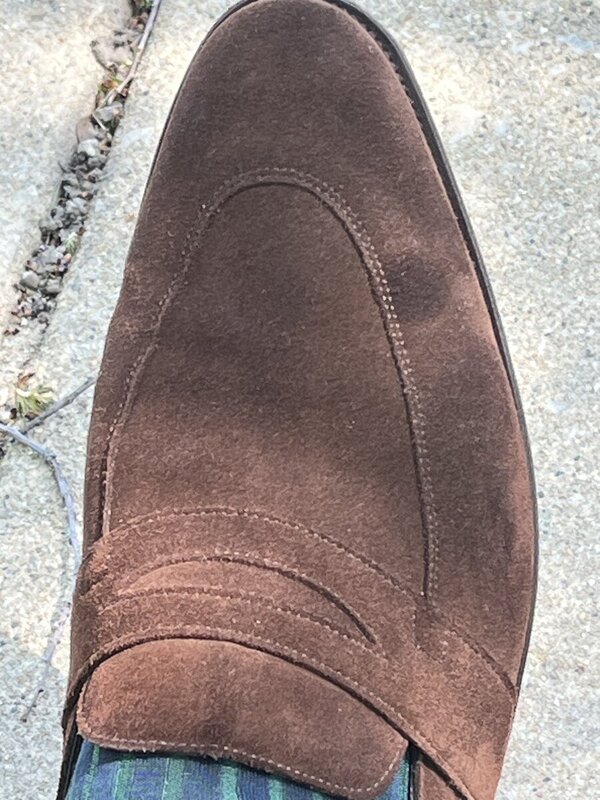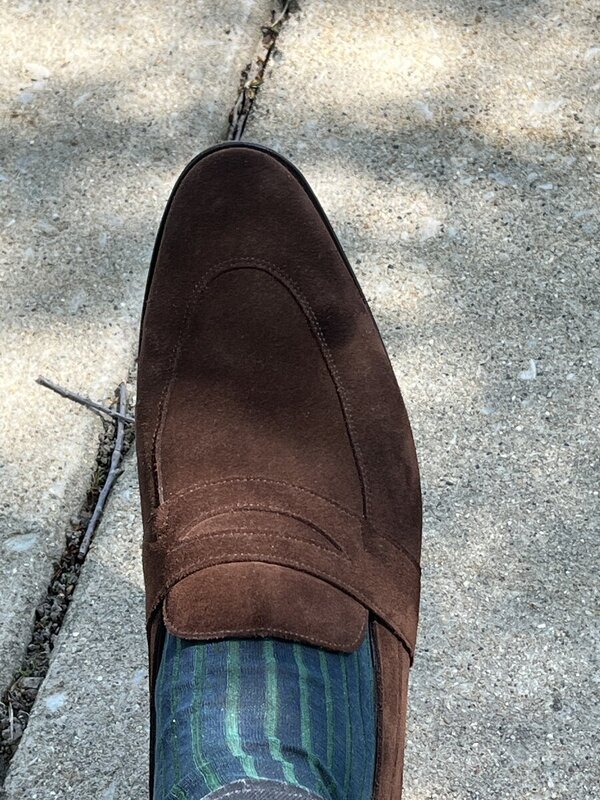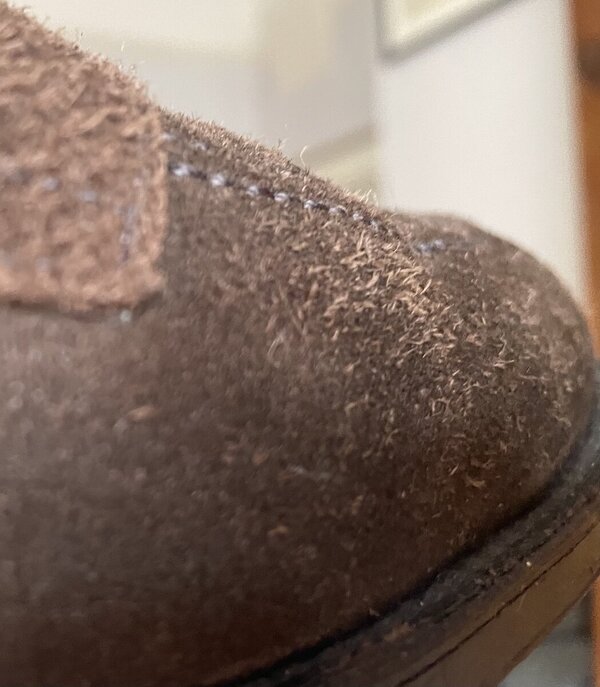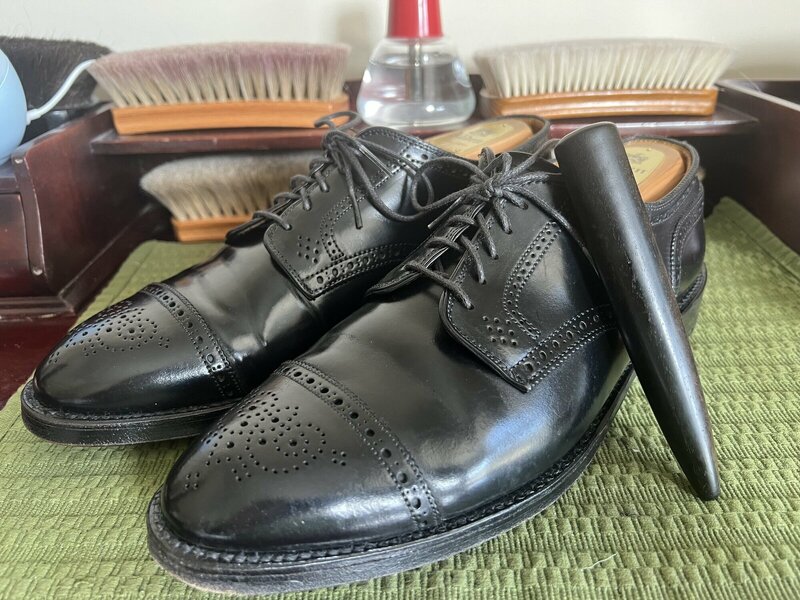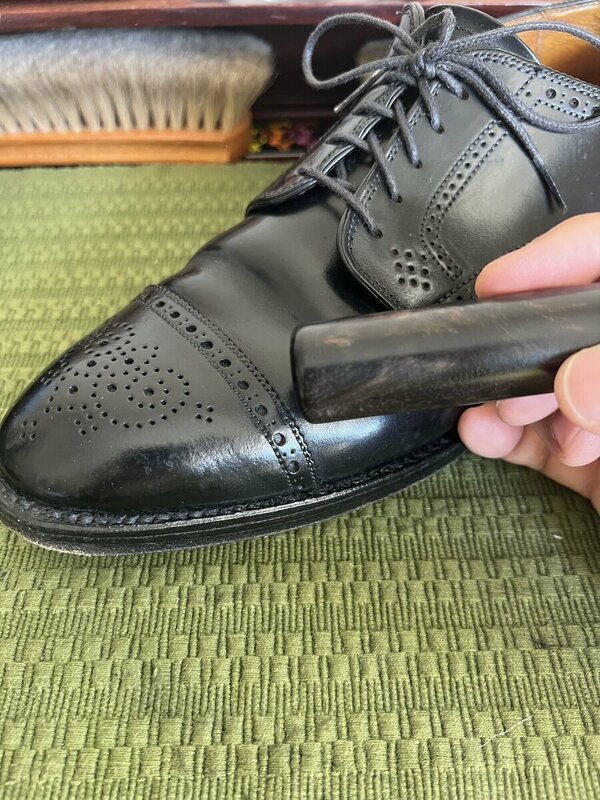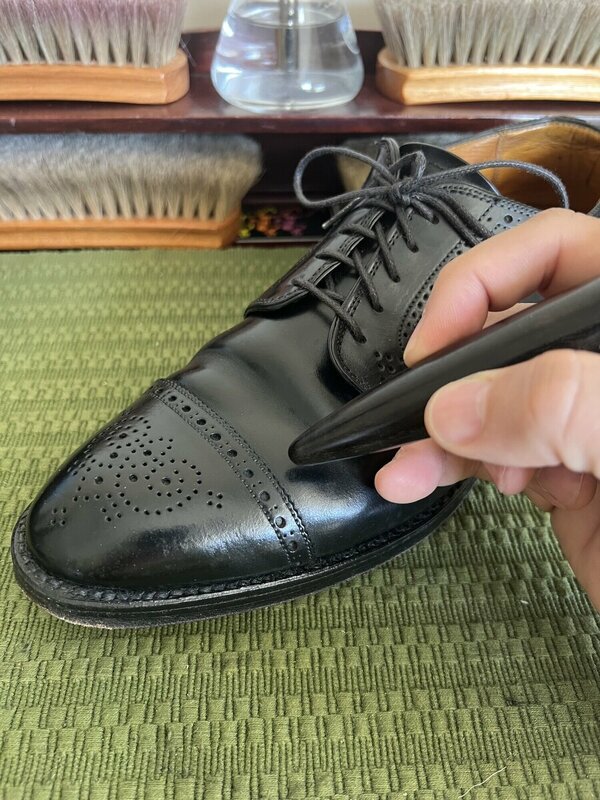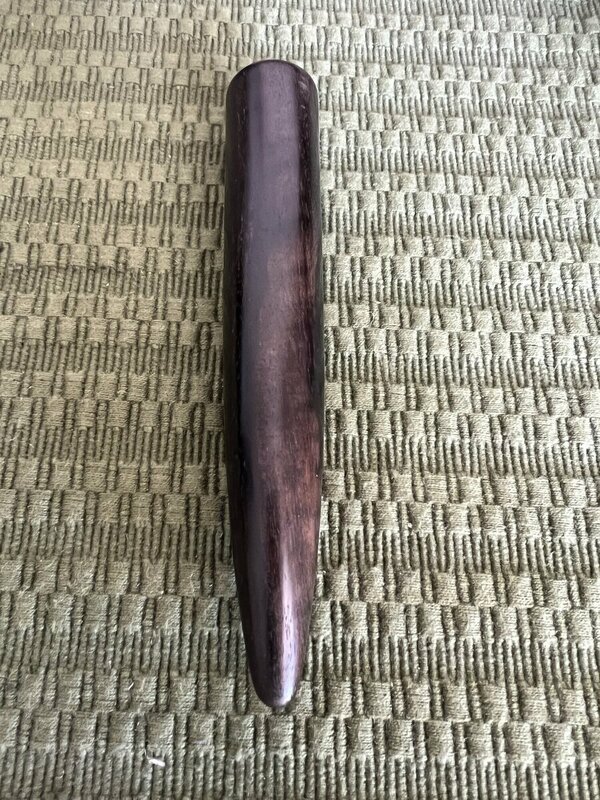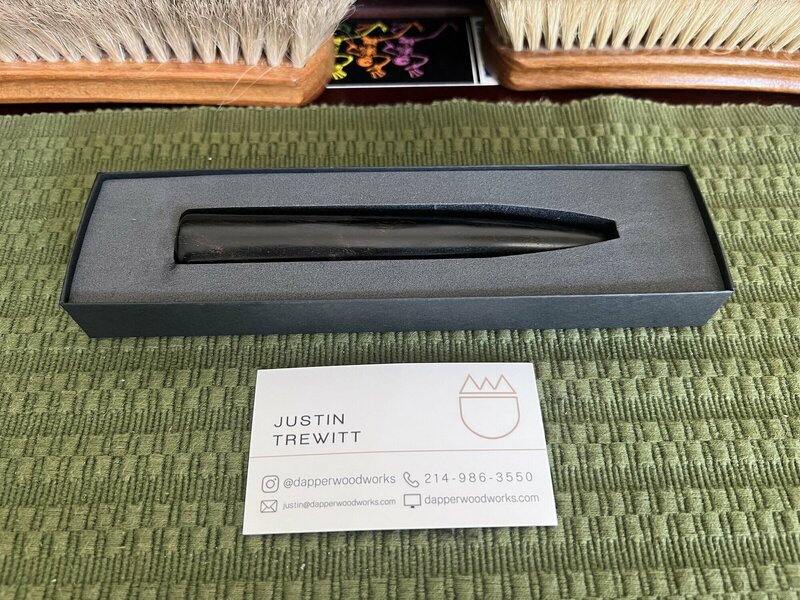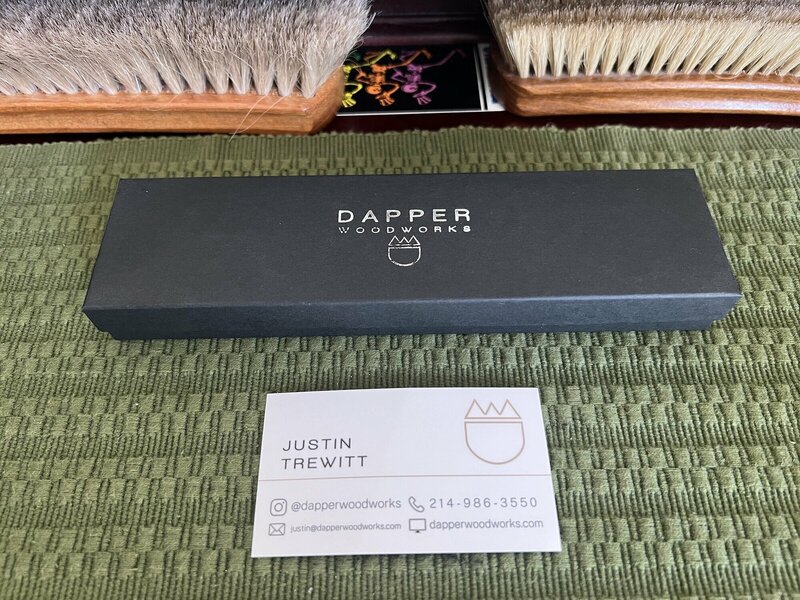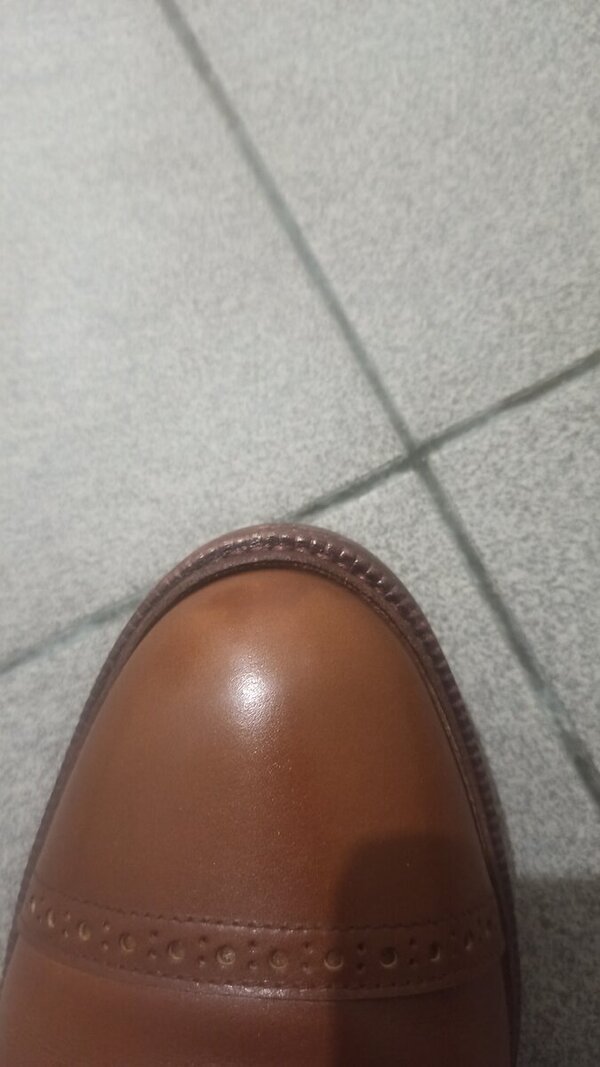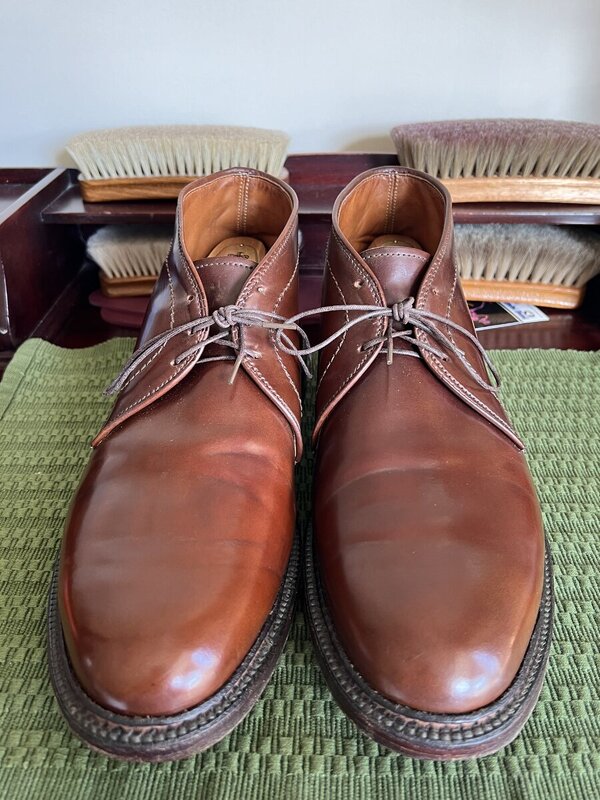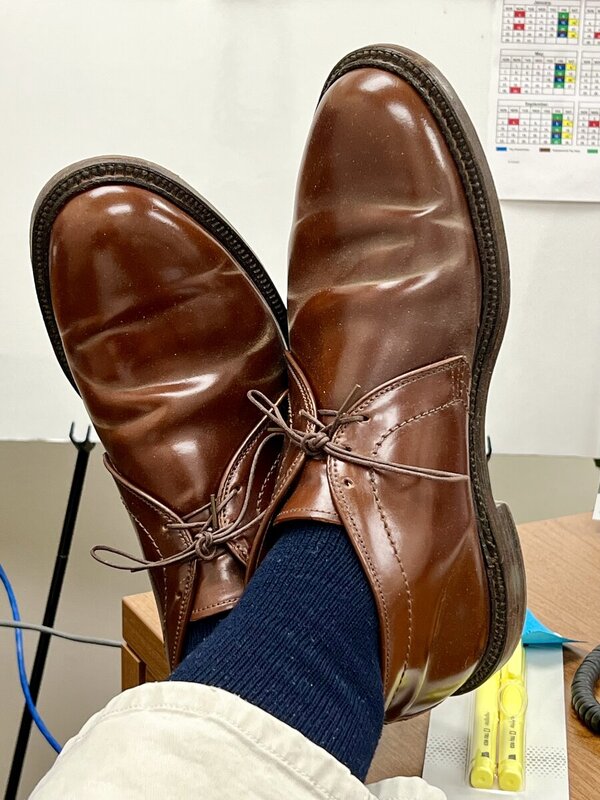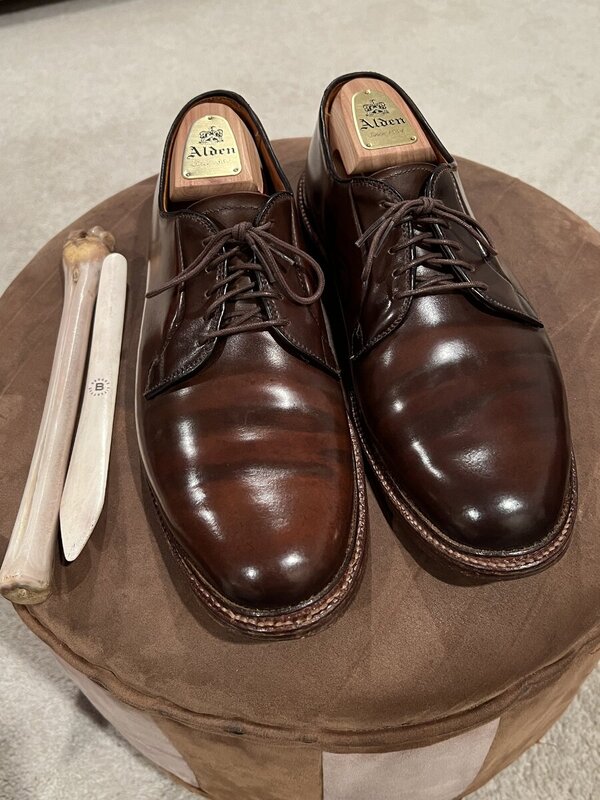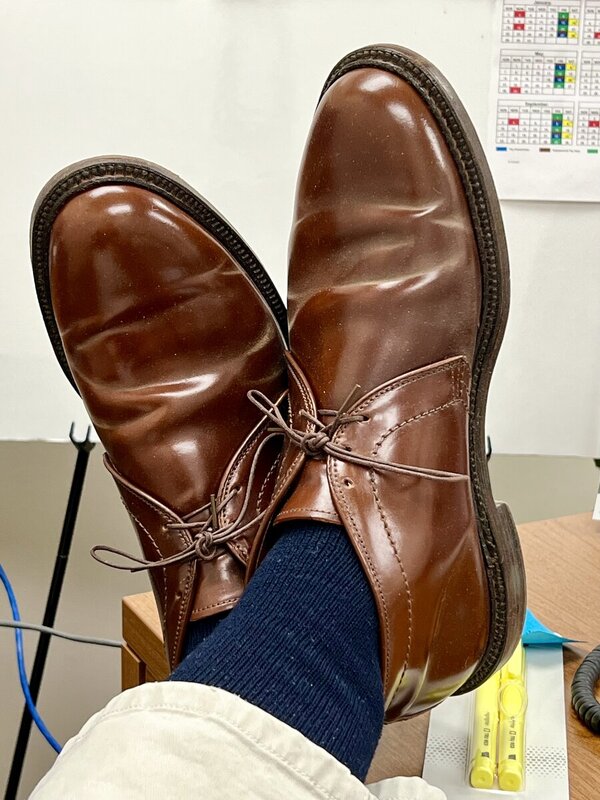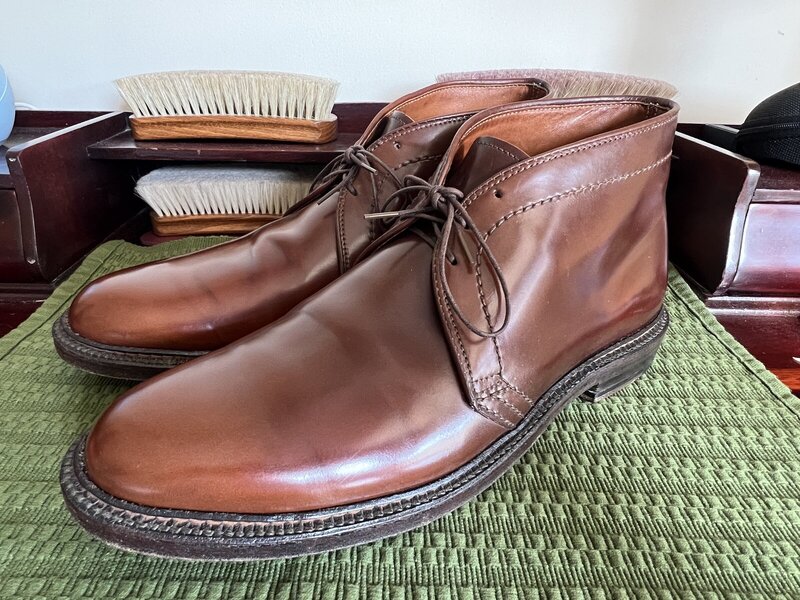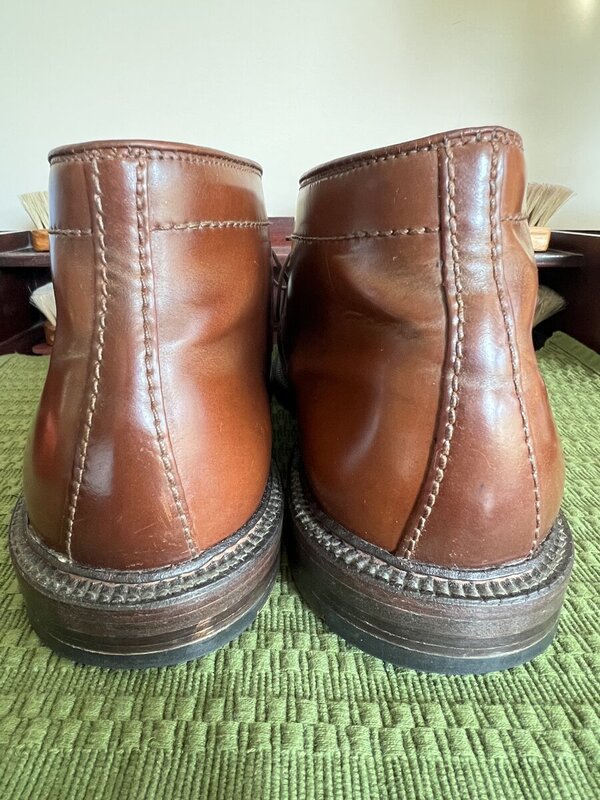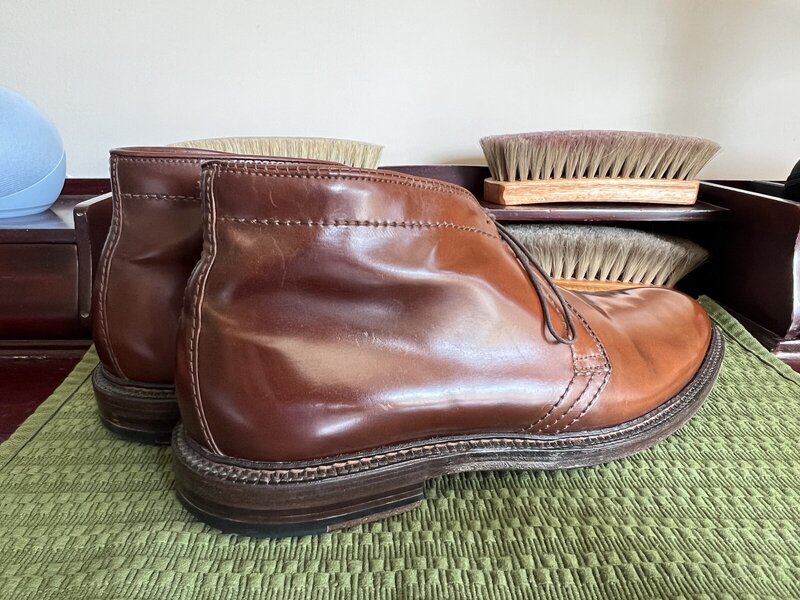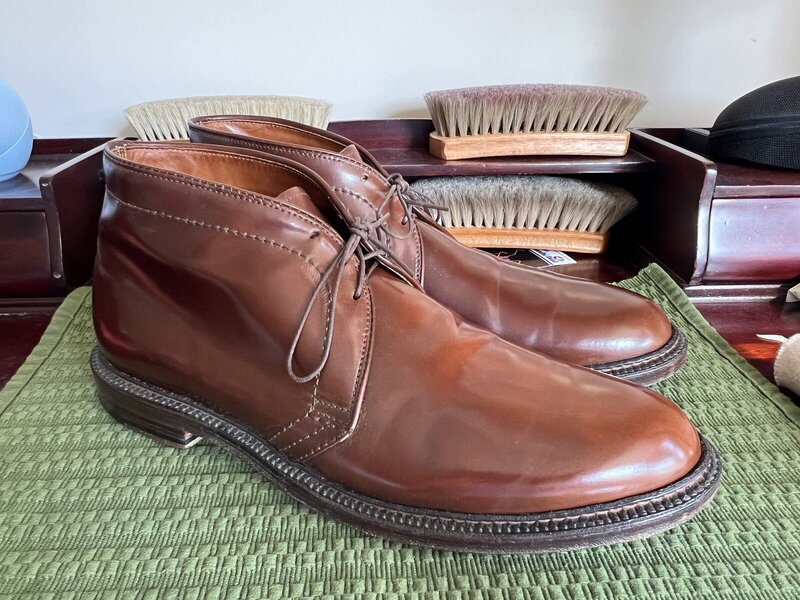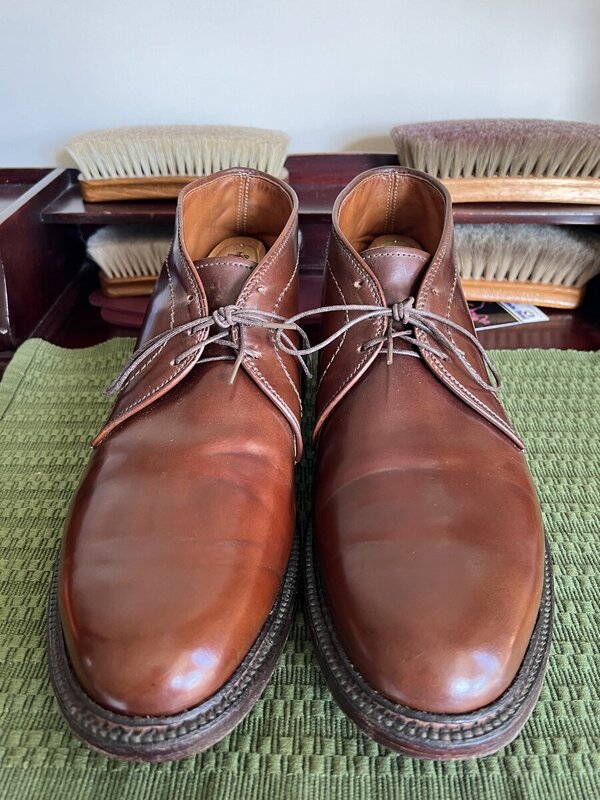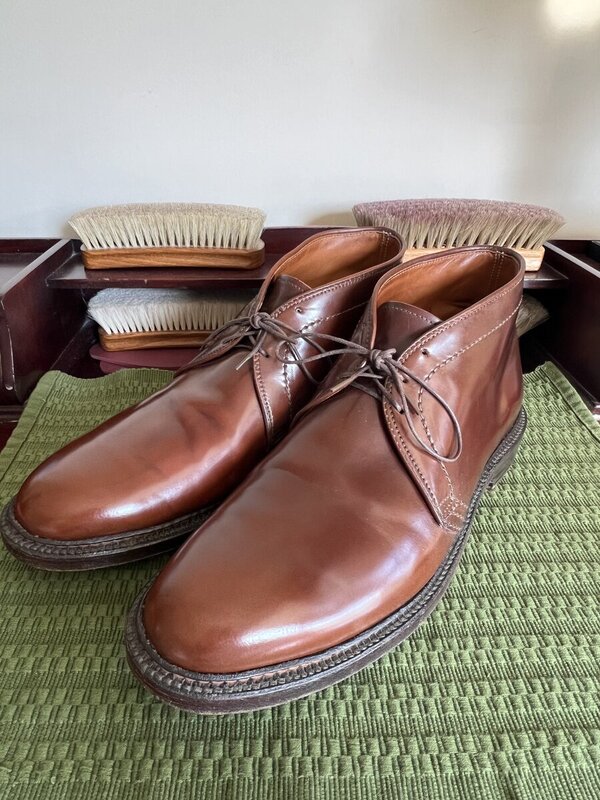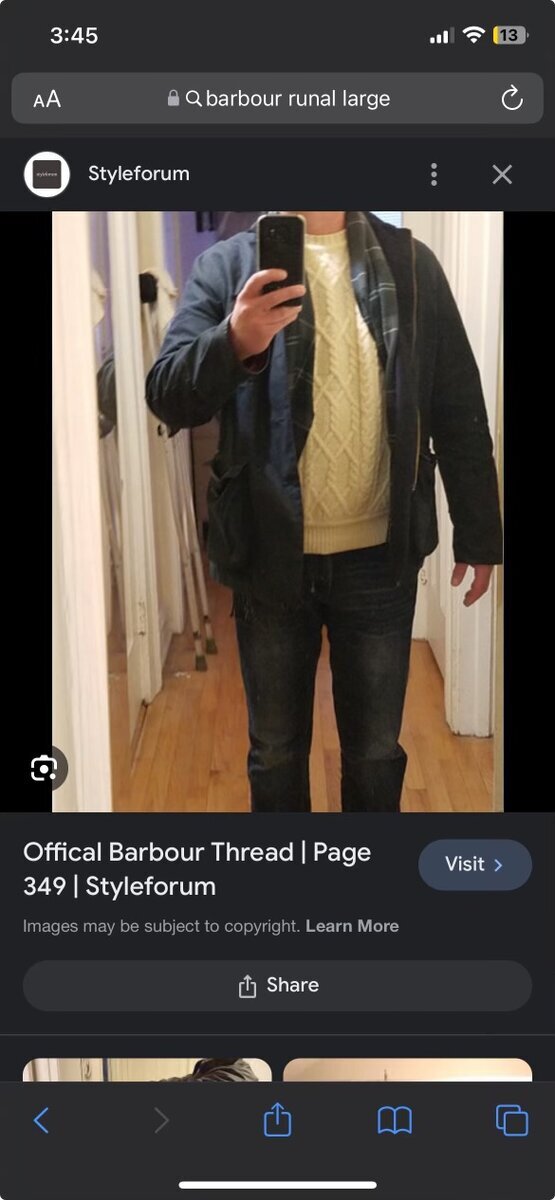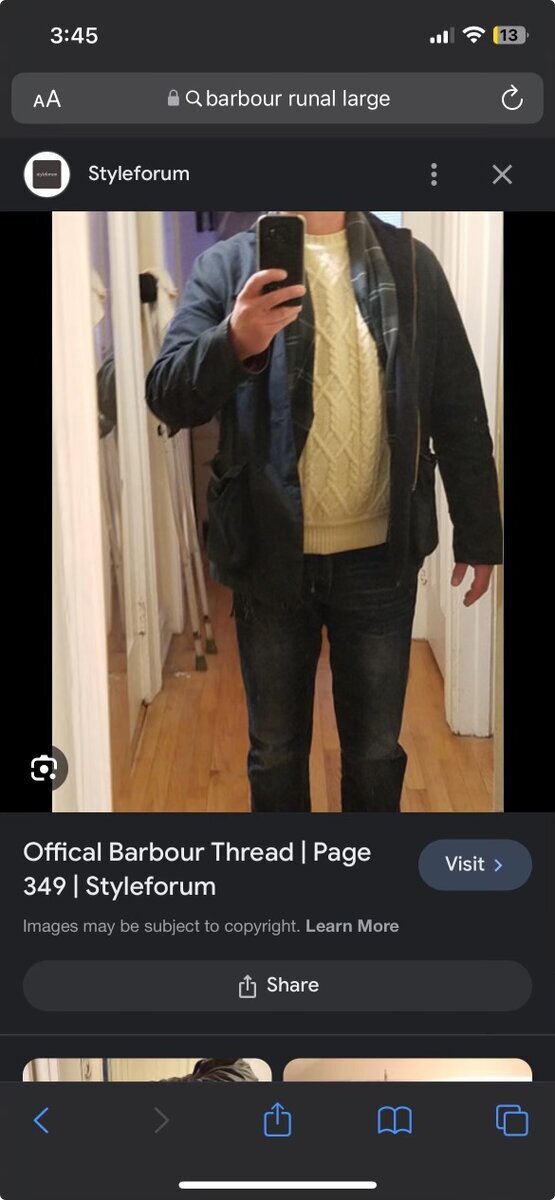Support the forum
Navigation
-
- Men's Style
- Classic Menswear
- Streetwear and Denim
- Preorders, Group Made-to-order, trunk shows, and o
- Menswear Advice
- Former Affiliate Vendor Threads; a Locked Forum.
- Career and job listings in fashion, mens clothing,
-
- American Trench
- AMIDÉ HADELIN
- Archibald London
- The Armoury
- Arterton
- Besnard
- Canoe Club
- Capra Leather
- Carmina
- Cavour
- Crush Store
- De Bonne Facture
- Drinkwater's Cambridge
- Drop93
- eHABERDASHER
- Enzo Custom
- Epaulet
- Exquisite Trimmings
- Fils Unique
- Gentlemen's Footwear
- Giin
- Grant Stone
- House of Huntington
- IsuiT
- John Elliott
- Jonathan Abel
- Kent Wang
- Kirby Allison
- Larimars Clothing
- Lazy Sun
- LuxeSwap
- Luxire Custom Clothing
- Nicks Boots
- No Man Walks Alone
- Once a Day
- Passus shoes
- Proper Cloth
- SARTORIALE
- SEH Kelly
- Self Edge
- Shop the Finest
- Skoaktiebolaget
- Spier and MacKay
- Standard and Strange
- Bespoke Shoemaker Szuba
- Taylor Stitch
- TLB Mallorca
- UNI/FORM LA
- Vanda Fine Clothing
- Von Amper
- Wrong Weather
- Yeossal
- Zam Barrett
Install the app
More options
-
Hi, I am the owner and main administrator of Styleforum. If you find the forum useful and fun, please help support it by buying through the posted links on the forum. Our main, very popular sales thread, where the latest and best sales are listed, are posted HERE
Purchases made through some of our links earns a commission for the forum and allows us to do the work of maintaining and improving it. Finally, thanks for being a part of this community. We realize that there are many choices today on the internet, and we have all of you to thank for making Styleforum the foremost destination for discussions of menswear. -
This site contains affiliate links for which Styleforum may be compensated.
-
STYLE. COMMUNITY. GREAT CLOTHING.
Bored of counting likes on social networks? At Styleforum, you’ll find rousing discussions that go beyond strings of emojis.
Click Here to join Styleforum's thousands of style enthusiasts today!
Styleforum is supported in part by commission earning affiliate links sitewide. Please support us by using them. You may learn more here.
You are using an out of date browser. It may not display this or other websites correctly.
You should upgrade or use an alternative browser.
You should upgrade or use an alternative browser.
**The Official Shoe Care Thread: Tutorials, Photos, etc.**
- Thread starter Mr. Moo
- Start date
- Watchers 1,519
Joshua Lee
Senior Member
- Joined
- Mar 27, 2012
- Messages
- 265
- Reaction score
- 27
^ That's been my experience too, especially in Germany where they don't use salt for ice, but mini rocks.. Takes nearly 6-8 months for those damn mini ***** to disappear.
Zinedine
Member
- Joined
- Jul 8, 2011
- Messages
- 6
- Reaction score
- 3
Very nice. What are these?
A before and after photo comparison. I've never try this before but I figure why not. The shoes were thrifted, from Huntsman and Sons, toes were scuffed up pretty bad, some dark areas where the leather was ripped a bit, thought I would used some Saphir cream with Kiwi was to darken the toes a bit. Clean with Lexol cleaner, Saphir universal cream, Saphir Mahogany cream, then brown Kiwi wax. The results are a bit redder than I'd like, I might have to get my hands on some dark brown cream and wax.
Before

After

Very nice. What are these?
Khanivore
New Member
- Joined
- Jan 14, 2013
- Messages
- 4
- Reaction score
- 0
Had my first attempt at bulling this evening. It was a hypnotic experience  Rather addictive! I think I made a half decent effort at it for my first attempt. Is it ok to continue bulling tomorrow or will I end up simply putting too many layers on? I am using very little polish and I am keen to fill in some of the dull areas where I think i either used too much polish or water.
Rather addictive! I think I made a half decent effort at it for my first attempt. Is it ok to continue bulling tomorrow or will I end up simply putting too many layers on? I am using very little polish and I am keen to fill in some of the dull areas where I think i either used too much polish or water.
Khanivore
New Member
- Joined
- Jan 14, 2013
- Messages
- 4
- Reaction score
- 0
I have a pair of dark brown boots with a lighter coloured wood sole and white stitching where the upper is connected to the sole of the shoe. Does anyone know how I can polish this shoe without turning the wood sole and the stitching brown as well?
glenjay
Senior Member
- Joined
- Feb 13, 2009
- Messages
- 748
- Reaction score
- 199
Thanks for the tutorial, and the high quality images Crat.
I personally would take a little different approach.
Water spots in leather are caused by concentrations of water (drops) flushing some oils to the surface, and then the water evaporates leaving the oil (and probably a few microscopic minerals - which were in the water).
If it were minor I would probably dampen the shoe well with a soft wet sponge, rub in and then rub out a little leather cleaner, and before it dried (a few hours in a dry warm room) I would add a coat of conditioner. Once dry the spots should be gone.
If it were major I would probably strip the shoes with RenoMat to get rid of any surface wax and draw some of the oils out, then do the same thing I mentioned above.
The leather cleaner should break up and remove the water related minerals, and getting the shoe fully damp will help disburse and, to some degree, flush the oils in the shoe.
There is no reason to soak the leather for a couple of hours. Once hide/skin has been turned to leather it absorbs water very well, and the cellular structure can be saturated in a matter of minutes (5 to 10 minutes with a very wet sponge - press down, don't wipe). If the shoe has a lot of wax layers then it should be stripped first as I mentioned, to remove barriers to absorption. Once the shoe has been re-oiled it can be polished as you normally would.
When leather is created in a tannery (before that it is skin or hide depending age of the animal it came from - calf skin, cow hide) it is soaked for an extended period of time (length depending on the method of tanning) but that is partly to assist in the tanning process that removes the existing oils and stabilizes the collagen protein bonds turning the skin to leather. It also helps in the fat liquoring process where an oil emulation is pressed into the fibers to support and protect the collagen protein bonds from drying out.
The more you soak the leather with water the more you flush out the existing oils (desirable in tanning, but not in normal care) . You can also introduce Hydrolytic Rancidity which occurs when water splits ***** acid chains away from the glycerol backbone in triglycerides. What you want to do is flush out the oxidized oils (which have risen toward the surface - regardless of water spots), and leave enough healthy oil to protect the collagen protein bonds from drying out before more oil can be introduced.
It is also important to note that oil does not evaporate, because of the size of most molecules in their molecular structure (it does have a smoke point that varies by oil type however), so oils do not evaporate out of your shoe leather. Oils oxidize which is also how they become rancid, this is known as Oxidative Rancidity, and is the most common way all oils go rancid. Oxidized oil tends to be pushed toward the surface (grain side mostly) as new oil is introduced to the leather and is brushed or cleaned from the surface over time (we are talking about the molecular level here).
Of course this is just my understanding. I'm sure there are others in this forum that have greater first hand experience or knowledge of these matters than I do.
Removing water stains
Stains

Shoes+(saddle) soap

Water; soak for a couple of hours until all the leather is wet through and through.

Dry the shoes stuffed with old newspaper. Change the paper regularly.

Polish

Thanks for the tutorial, and the high quality images Crat.
I personally would take a little different approach.
Water spots in leather are caused by concentrations of water (drops) flushing some oils to the surface, and then the water evaporates leaving the oil (and probably a few microscopic minerals - which were in the water).
If it were minor I would probably dampen the shoe well with a soft wet sponge, rub in and then rub out a little leather cleaner, and before it dried (a few hours in a dry warm room) I would add a coat of conditioner. Once dry the spots should be gone.
If it were major I would probably strip the shoes with RenoMat to get rid of any surface wax and draw some of the oils out, then do the same thing I mentioned above.
The leather cleaner should break up and remove the water related minerals, and getting the shoe fully damp will help disburse and, to some degree, flush the oils in the shoe.
There is no reason to soak the leather for a couple of hours. Once hide/skin has been turned to leather it absorbs water very well, and the cellular structure can be saturated in a matter of minutes (5 to 10 minutes with a very wet sponge - press down, don't wipe). If the shoe has a lot of wax layers then it should be stripped first as I mentioned, to remove barriers to absorption. Once the shoe has been re-oiled it can be polished as you normally would.
When leather is created in a tannery (before that it is skin or hide depending age of the animal it came from - calf skin, cow hide) it is soaked for an extended period of time (length depending on the method of tanning) but that is partly to assist in the tanning process that removes the existing oils and stabilizes the collagen protein bonds turning the skin to leather. It also helps in the fat liquoring process where an oil emulation is pressed into the fibers to support and protect the collagen protein bonds from drying out.
The more you soak the leather with water the more you flush out the existing oils (desirable in tanning, but not in normal care) . You can also introduce Hydrolytic Rancidity which occurs when water splits ***** acid chains away from the glycerol backbone in triglycerides. What you want to do is flush out the oxidized oils (which have risen toward the surface - regardless of water spots), and leave enough healthy oil to protect the collagen protein bonds from drying out before more oil can be introduced.
It is also important to note that oil does not evaporate, because of the size of most molecules in their molecular structure (it does have a smoke point that varies by oil type however), so oils do not evaporate out of your shoe leather. Oils oxidize which is also how they become rancid, this is known as Oxidative Rancidity, and is the most common way all oils go rancid. Oxidized oil tends to be pushed toward the surface (grain side mostly) as new oil is introduced to the leather and is brushed or cleaned from the surface over time (we are talking about the molecular level here).
Of course this is just my understanding. I'm sure there are others in this forum that have greater first hand experience or knowledge of these matters than I do.
Crat
Distinguished Member
- Joined
- Feb 14, 2011
- Messages
- 1,989
- Reaction score
- 4,433
What you're saying makes sense, glenjay.
Dampening and rubbing (sponge or cloth) has usually not worked for me though. Trial and error got me here and this seemed to work.
I don't have any Renomat but will def. try it out next time.
Could it be that the oils in the leather spread out more evenly during the lukewarm soak?
Did use Saphir renovateur after they were dry to try and make up for any lost oils.
Dampening and rubbing (sponge or cloth) has usually not worked for me though. Trial and error got me here and this seemed to work.
I don't have any Renomat but will def. try it out next time.
Could it be that the oils in the leather spread out more evenly during the lukewarm soak?
Did use Saphir renovateur after they were dry to try and make up for any lost oils.
glenjay
Senior Member
- Joined
- Feb 13, 2009
- Messages
- 748
- Reaction score
- 199
Not really. The oils are already disbursed throughout the leather celluar structure (unless other damage has occured), so all you are really doing is displacing the oil to some degree with water, and the oil will rise toward the largest evaprative surface (the grain/outside of the leather (even though oil does not evaporate), rather than across the cellular structure. Some cross cellular disbursion will occur, but it will be pretty localized.
Since the melting point for most oils is rather low (other than lanolin, which isn't a true oil) the tempature will not affect the viscosity of the oil as long as it is around room tempature, or a little above (melting point of Neatsfoot oil is about 70F)
No, I used Lexol leather conditioner, because I wanted to specifically replace the lost oils first before adding other compounds. I then used Saphir cream and paste as I would so normally.
I add the leather conditioner while the leather is still wet in this case, and use the water to draw the heaver saturated oils into the cellular structure, while pushing out the lighter oxidized oils.
Could it be that the oils in the leather spread out more evenly during the lukewarm soak?
Not really. The oils are already disbursed throughout the leather celluar structure (unless other damage has occured), so all you are really doing is displacing the oil to some degree with water, and the oil will rise toward the largest evaprative surface (the grain/outside of the leather (even though oil does not evaporate), rather than across the cellular structure. Some cross cellular disbursion will occur, but it will be pretty localized.
Since the melting point for most oils is rather low (other than lanolin, which isn't a true oil) the tempature will not affect the viscosity of the oil as long as it is around room tempature, or a little above (melting point of Neatsfoot oil is about 70F)
Did use Saphir renovateur after they were dry to try and make up for any lost oils.
No, I used Lexol leather conditioner, because I wanted to specifically replace the lost oils first before adding other compounds. I then used Saphir cream and paste as I would so normally.
I add the leather conditioner while the leather is still wet in this case, and use the water to draw the heaver saturated oils into the cellular structure, while pushing out the lighter oxidized oils.
glenjay
Senior Member
- Joined
- Feb 13, 2009
- Messages
- 748
- Reaction score
- 199
Sorry Crat, I thought that the last line of your response was a question to me, not a statement. After re-reading it, it sounds like you are stating that you used renovator to replace the lost oils. Which is certainly better than just a cream polish. I would still probably use straight leather conditioner to replace the amount of oil displaced by the process.
It sounds, and looks, like your process works for you, and it was very kind of you to share it with all. I'm just tossing out some other things to consider.
It sounds, and looks, like your process works for you, and it was very kind of you to share it with all. I'm just tossing out some other things to consider.
Crat
Distinguished Member
- Joined
- Feb 14, 2011
- Messages
- 1,989
- Reaction score
- 4,433
Which Is why I like SF; there's food for thought here and people to discuss these matters with.
Better understanding of the materials gives me and the other members more room for improvement, so thanks for sharing : )
I wouldn't do this too often btw, but once every few years shouldn't be too harmfull I hope?
I'm just tossing out some other things to consider.
Which Is why I like SF; there's food for thought here and people to discuss these matters with.
Better understanding of the materials gives me and the other members more room for improvement, so thanks for sharing : )
I wouldn't do this too often btw, but once every few years shouldn't be too harmfull I hope?
dbhdnhdbh
Senior Member
- Joined
- Sep 3, 2012
- Messages
- 333
- Reaction score
- 46
I would love to hear more experts on the idea of soaking the shoes. Most of the leather was perfectly fine and did not need any treatment at all. Now the entire shoe has been waterlogged, including areas inside that will dry slowly and risk mold formation.The nice cosmetic result may not be worth the damage done.
Last edited:
MoneyWellSpent
Distinguished Member
- Joined
- Oct 4, 2012
- Messages
- 2,697
- Reaction score
- 1,178
Can I get some opinions on using a sponge vs. a cloth rag for saddle soaping shoes? I have been using a cloth rag on a pair of Allen Edmonds rough collection shoes, but I am paranoid that I may damage the stitching from the friction over time. I'm wondering if a soft sponge may be better. For those of you who use sponges, what kind do you use? Appreciate the advice!
glenjay
Senior Member
- Joined
- Feb 13, 2009
- Messages
- 748
- Reaction score
- 199
My favorite sponges are Sea Wool sponges. They are very soft, and easy to clean.
I use a cotton cloth a lot more often than a sponge for shoe care however. Unless you are really aggressive with the cloth (rub so hard you remove the original finish of the leather) you should be fine, and so will the stitching.
I use a cotton cloth a lot more often than a sponge for shoe care however. Unless you are really aggressive with the cloth (rub so hard you remove the original finish of the leather) you should be fine, and so will the stitching.
MoneyWellSpent
Distinguished Member
- Joined
- Oct 4, 2012
- Messages
- 2,697
- Reaction score
- 1,178
My favorite sponges are Sea Wool sponges. They are very soft, and easy to clean.
I use a cotton cloth a lot more often than a sponge for shoe care however. Unless you are really aggressive with the cloth (rub so hard you remove the original finish of the leather) you should be fine, and so will the stitching.
Thanks for the reply. Taking off the finish of the leather isn't a problem, because it is just tan Horween Dublin leather. It is wax infused, but other than that it's color is derived straight from the tannage. I may try the sponges you recommended just to see which one I like better.
FEATURED PRODUCTS
-
 LuxeSwap Auction - Paul Stuart Edward Green Butterfly Loafers
A piece of forum lore, preferred by the legendary Reginald Jerome de Mans, the Edward Green butterfly loafer on the 184 last is made even more beautiful by years of unique patina.
LuxeSwap Auction - Paul Stuart Edward Green Butterfly Loafers
A piece of forum lore, preferred by the legendary Reginald Jerome de Mans, the Edward Green butterfly loafer on the 184 last is made even more beautiful by years of unique patina.
-
 Nicks Handmade Boots - BuilderPro® - ThurmanNW - $589
The BuilderPro® ThurmanNW is designed for those who demand ruggedness without compromising on comfort.
Nicks Handmade Boots - BuilderPro® - ThurmanNW - $589
The BuilderPro® ThurmanNW is designed for those who demand ruggedness without compromising on comfort.
-
Besnard - Navy Cotton Skipper Polo - $180.00 This navy skipper polo is inspired by 1940s sportswear. It features a tailored fit and a slightly shorter body to accommodate high-waisted trousers or shorts.
Latest posts
- Replies
- 902
- Views
- 90,046
- Replies
- 1,852
- Views
- 373,669
- Replies
- 84,171
- Views
- 12,420,577
- Replies
- 86,523
- Views
- 14,593,457
- Replies
- 5,549
- Views
- 412,350
Similar threads
- Replies
- 17
- Views
- 14,261
- Locked
- Replies
- 5,548
- Views
- 787,684
- Replies
- 9
- Views
- 2,105
- Replies
- 3
- Views
- 8,977
Featured Sponsor
Forum Sponsors
- American Trench
- AMIDÉ HADELIN
- Archibald London
- The Armoury
- Arterton
- Besnard
- Canoe Club
- Capra Leather
- Carmina
- Cavour
- Crush Store
- De Bonne Facture
- Drinkwater's Cambridge
- Drop93
- eHABERDASHER
- Enzo Custom
- Epaulet
- Exquisite Trimmings
- Fils Unique
- Gentlemen's Footwear
- Giin
- Grant Stone
- House of Huntington
- IsuiT
- John Elliott
- Jonathan Abel
- Kent Wang
- Kirby Allison
- Larimars Clothing
- Lazy Sun
- LuxeSwap
- Luxire Custom Clothing
- Nicks Boots
- No Man Walks Alone
- Once a Day
- Passus shoes
- Proper Cloth
- SARTORIALE
- SEH Kelly
- Self Edge
- Shop the Finest
- Skoaktiebolaget
- Spier and MacKay
- Standard and Strange
- Bespoke Shoemaker Szuba
- Taylor Stitch
- TLB Mallorca
- UNI/FORM LA
- Vanda Fine Clothing
- Von Amper
- Wrong Weather
- Yeossal
- Zam Barrett
Members online
- classicthrifter
- SuaveStyle
- eddyroxx
- JUAN MANUEL
- ElJokerino
- pbrandes
- clee1982
- carterneeld
- eightace
- Chaconne
- sighohwell
- yusufhar
- WBaker
- ValidusLA
- zippyh
- danneskjold
- obecity
- TheODGuy
- bows1
- Mr_Spud
- Phinis
- Ortip
- Jr Mouse
- Sante Della
- Hombre Secreto
- tomsocal
- Baron
- JayArcher
- New Shoes1
- indigoeagle
- Eidgenosse
- wolfshack
- herrmj
- flipstah
- mogili222
- yungr1
- APK
- modernize
- LorenzoOeste
- ave1
- bc78
- SonnyTheElder
- GoldenHarvestMedal
- Pakman161
- jalh97
- Zerase
- MrBaho
- brokencycle
- AdoubleU13
- Reggae Mike
Total: 2,976 (members: 88, guests: 2,888)








